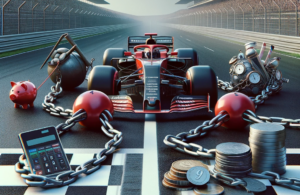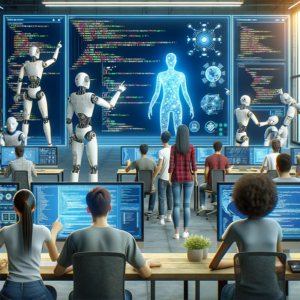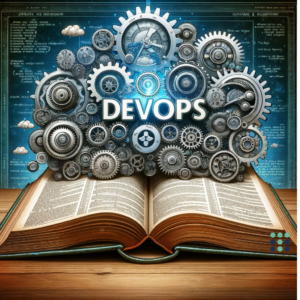DASM Flash Cards
Lesson 1 - All About Agile
1.01
Question
Agile is an __________ approach to project management and software development that helps teams deliver ________ ________.
Answer
Agile is an ITERATIVE approach to project management and software development that helps teams deliver VALUE FASTER.
Answer
Agile teams deliver work in SMALL, CONSUMABLE INCREMENTS.
1.03
Question
The _________ _________ is where the team collects all the work flowing to the team
Answer
The PRODUCT BACKLOG is where the team collects all the work flowing to the team
1.04
Question
The ________ _________ prioritizes the Product Backlog, signalling what work is the most important.
Answer
The PRODUCT OWNER prioritizes the Product Backlog, signalling what work is the most important.
1.05
Question
At the start of each iteration, the team pulls the work they plan to do from the Product Backlog into the _________ __________
Answer
At the start of each iteration, the team pulls the work they plan to do from the Product Backlog into the ITERATION BACKLOG.
1.06
Question
The four Agile ceremonies (aka rituals) are:
1)______
2)______
3)______
4)______
Answer
The four Agile ceremonies (aka rituals) are:
1) Iteration Planning
2) Coordination Meeting
3) Iteration Demonstration
4) Iteration Retrospective
Answer
Agile artifacts include:
1) Product Backlog
2) Iteration Backlog
3) Burndown Chart
4) User Story
1.08
Question
User Stories are tools used in Agile to capture a description of a feature from the ______ perspective
Answer
User Stories are tools used in Agile to capture a description of a feature from the END USER's perspective
Answer
No, they can be written by anyone.
Answer
INDEPENDENT
NEGOTIABLE
VALUABLE
ESTIMABLE
SMALL
TESTABLE
Answer
Estimates are BEST GUESSES
Answer
The definition of done for a Story is
A CHECKLIST OF WHAT MAKES A STORY 'DONE' (it applies to all stories)
and
AN AGREED UPON SET OF ITEMS THAT MUST BE SATISFIED BEFORE A USER STORY CAN BE CONSIDERED COMPLETE.
1.13
Question
What do you use to keep your team informed as to how things are going both for the current iteration and overall?
Answer
USE AN INFORMATION RADIATOR
Answer
No.
(Lean is based on systems thinking)
Lesson 2 - Agile and Beyond
Answer
No, DA strives to be agnostic in its terminology
Answer
DA is an AGNOSTIC HYBRID that leverages strategies from A VARIETY OF SOURCES
Answer
PRINCIPLES (based on Lean & Flow concepts)
PROMISES (agreements made with teammates, stakeholders, and others in our org we interact with)
GUIDELINES (used to help us be more effective in our WoW)
Answer
1) Delight customers
2) Be awesome
3) Context counts (we choose our WoW to reflect the context we face & then evolve it as we go)
4) Be pragmatic
5) Choice is good
6) Optimize flow
7) Organize around products/services
8) Enterprise awareness
2.05
Question
We optimize flow across the entire _______________ as we shorten _______________
Answer
We optimize flow across the entire VALUE STREAM as we shorten TIME TO MARKET
Answer
1) Psychological safety & diversity
2) Accelerate value realization
3) Collaborate proactively
4) Work & workflow visible
5) Predictability
6) Workloads within capacity
7) Improve continuously
Answer
1) Validate learnings
2) Apply design thinking (i.e. being empathetic to the customer; Reminder: Systems thinking is Lean)
3) Attend to relationships through the value stream
4) Environments that foster joy
5) Change culture by improving the system
6) Semi-autonomous self-organizing teams
7) Adopt measures to improve outcomes
8) Leverage / enhance organizational assets
2.08
Question
Continuous improvement (Plan-Do-Study-Act) can also be referred to as a ______ loop
Answer
Continuous improvement (Plan-Do-Study-Act) can also be referred to as a KAIZEN loop
(Meaning: Improvement)
Answer
DA takes a GOAL-DRIVEN approach
2.10
Question
A ____________________ is a system where a perfect understanding of the individual parts does NOT automatically convey a perfect understanding of the whole system’s behaviour
Answer
A COMPLEX ADAPTIVE SYSTEM is a system where a perfect understanding of the individual parts does NOT automatically convey a perfect understanding of the whole system’s behaviour
Answer
DA is an AGNOSTIC HYBRID that leverages strategies from a variety of sources
Answer
The DA toolkit captures TEAM-LEVEL strategies in a series of PROCESS BLADES
2.13
Question
Process blades in the DA toolkit have been organized into four layers. They are:
1) ______
2) ______
3) ______
4) ______
Answer
1) Foundation
2) Disciplined DevOps
3) Value Stream
4) Disciplined Agile Enterprise
Answer
The Disciplined Agile Delivery (DAD) blade is at the DISCIPLINED DEVOPS layer
2.15
Question
The DAD process goals for the DA life cycles are organized under four phases. They are:
1) ______
2) ______
3) ______
4) ______
Answer
1) Inception
2) Construction
3) Transition
4) Ongoing
Answer
1) Goal
2) Decision Points
3) Options
2.17
Question
The Options on a Goal Diagram can either be an _____________ option list or an ________________ option list
Answer
Ordered
(Reminder: these are the ones depicted with an arrow; the most effective are at the top)
Unordered
(Reminder: Are depicted without an arrow)
2.18
Question
The Options on a Goal Diagram that are set to Bold are a potential ___________________
Answer
The Options on a Goal Diagram that are set to Bold are STARTING POINT
(Reminder: There are trade-offs associated with each option)
Lesson 3 - Building a Disciplined Agile Team
Answer
A SPIDER diagram helps assess scaling factors
(Reminder: It helps us assess the various scaling factors that affect a context; Helps us choose our Way of Working)
3.02
Question
From a governance perspective, teams need _________ more than they need __________
Answer
From a governance perspective, teams need LEADERS more than they need MANAGERS
Answer
A leader focuses on GOALS; a manager focuses on TASKS
Answer
1) Team Lead
2) Product Owner
3) Architecture Owner
4) Team Member
5) Stakeholder
3.05
Question
The _______________ prioritizes the product backlog and is the go-to person for business domain information
Answer
The PRODUCT OWNER prioritizes the product backlog and is the go-to person for business domain information
3.06
Question
The _____________ keeps the team on their Agile path and guides them evolve their Way of Working (WoW)
Answer
The TEAM LEAD keeps the team on their Agile path and guides them evolve their Way of Working (WoW)
3.07
Question
The _____________________ has a technical background and ideally a good understanding of the business domain. They guide the creation & evolution of the architecture
Answer
The ARCHITECTURE OWNER has a technical background and ideally a good understanding of the business domain. They guide the creation & evolution of the architecture
3.08
Question
The ___________________ will self-organize, identifying & ‘signing up’ for tasks, performing tasks, & tracking their status toward task completion
Answer
The TEAM MEMBER will self-organize, identifying & ‘signing up’ for tasks, performing tasks, & tracking their status toward task completion
3.09
Question
The _______________ is materially impacted by the outcome of the solution. They can include direct users, senior leadership, the funder of the work, etc.
Answer
The STAKEHOLDER is materially impacted by the outcome of the solution. They can include direct users, senior leadership, the funder of the work, etc.
Answer
1) Independent Tester
(Reminder: Are outside the team)
2) Specialist
(Examples: Business Analyst, Enterprise Architect, Program Manager, etc.)
3) Domain Expert (SME)
(Have deep knowledge of the domain; Called upon by the Product Owner)
4) Technical Expert
5) Integrator
3.11
Question
Does DA address all possible roles that will occur in an organization? (Yes/No)
Answer
No; But it does address many of the roles that are common in modern organizations
Answer
Yes
3.13
Question
A _______________________ defines the team’s internal way of working & how they interact with other teams
Answer
A TEAM WORKING AGREEMENT defines the team’s internal way of working & how they interact with other teams
3.14
Question
For a ____________ team, we bring people to the work. For a _____________ team, we bring work to the team
Answer
For a PROJECT team, we bring people to the work. For a LONG-STANDING team, we bring work to the team
Answer
A cross-functional, ‘WHOLE’ team enables agility.
(Is the situation when we have all the skills needed on the team to get the job done)
3.16
Question
A shared services team can be either a __________________________ enterprise team or a _________________________ enterprise team
Answer
A shared services team can be either a COLLABORATIVE enterprise team or a SPECIALIZED enterprise team
- Collaborative enterprise team
(Are members of both an enterprise team and on a work team) - Specialized enterprise team
(Fulfill requests for work from work teams)





